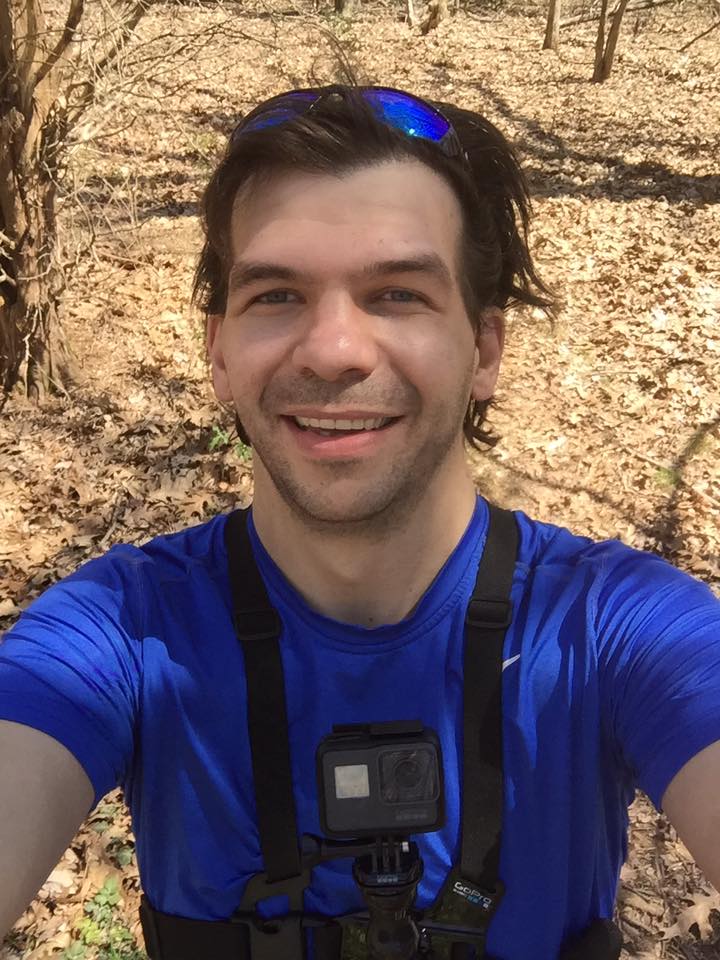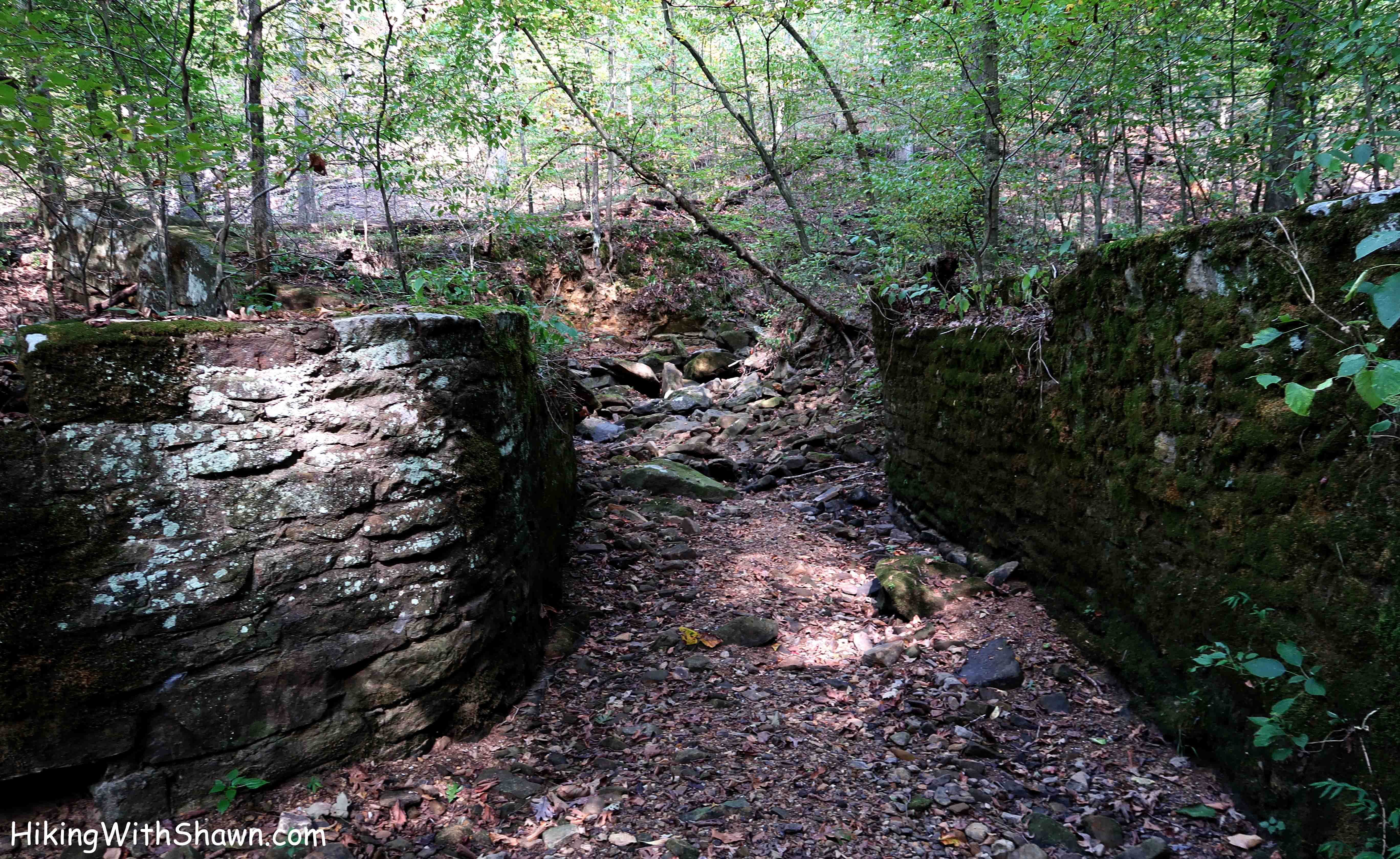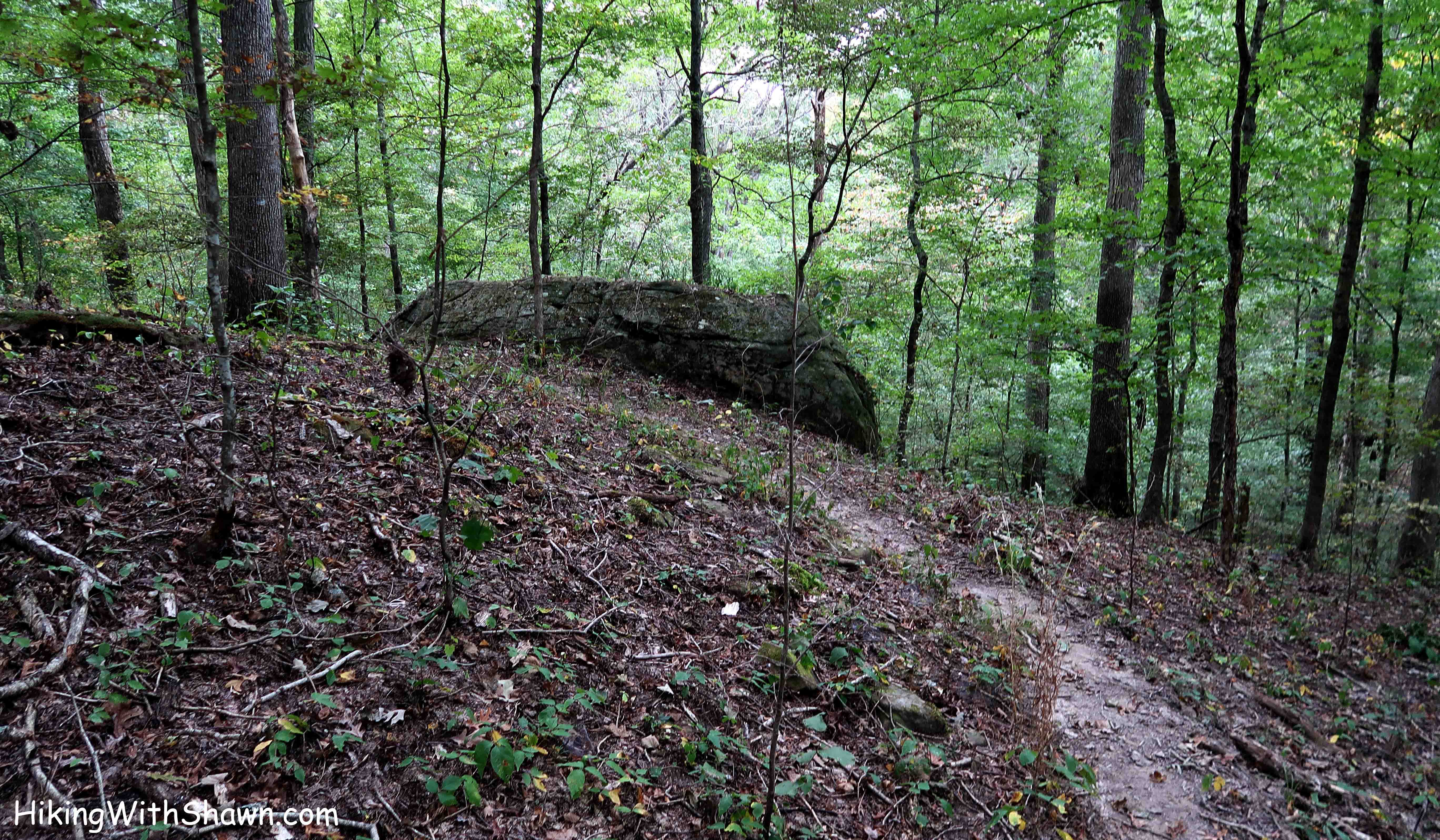Red Cedar Trail
Giant City State Park
Backpacking Guide
Red Cedar Trail at Giant City State Park is the premier backpacking trail of the entire inventory of trails within the state park. If you are looking for a rugged and more wilderness-like experience, the Red Cedar Trail is the trail for you. In this guide, I want to show you the best practices for backpacking the Red Cedar Trail so that you can enjoy it as much as I can.
Red Cedar Trail Facts:
- Length: 12 miles
- Duration: 2 days
- Best Times: Late Fall to Spring
- Difficulty: Moderate
- Bear Canisters: Not Required
- Permit Camping: Permit Required
Red Cedar Trail
Photo Gallery
Red Cedar Trail
Information & History
The Red Cedar Trail at Giant City State Park is the longest hiking trail within the park. Red Cedar Trail is rugged and offers trail users a more wilderness-like experience while on the trail. Red Cedar Trail is also the only trail at Giant City where hikers can camp in a camp area specifically designed for the trail.
Red Cedar Trail was created by Park Staff and the International Young Adult Conservation Corps (IYACC). The trail took two years to complete from start to finish. The trail was completed in April of 1979.
The Giant City State Park was mainly created as a whole by the Civilian Conservation Corp (CCC) and Park Staff during the year 1935. Aside from the Red Cedar Trail, Giant City State Park offers various other hiking trails for various types of hikers including handicap trail users. Other activities and amenities of the park include equestrian trails and rentals, development campground for tent and RV use, rentable picnic shelters equipped with tables and BBQ grills, ponds for fishing, areas for hunting, rock climbing areas and scenic roads fit for scenic driving and road biking.
The Red Cedar Trail starts and ends at the Tent Camping Area of the Main Giant City Class A Campground. The trailhead is southeast of the parking area near the restroom. The blazes for Red Cedar Trail are solid white diamonds with red filled in circles in the middle, red and black ribbons and red pain marks on the trees. Some trails will indicate a horse and the white/blue “I” diamond blazes indicate River to River Trail – just ensure that you remain on the trail that the Red Cedar Blazes are present on. The blazes are pointing in the direction that you should be going (tip of top diamond).
Red Cedar Trail
Permits, Parking & Camping
If you plan to camp at Red Cedar Trail campground, it will cost about $10 which can be paid at the Giant City Welcome Center or the main campground if the Welcome Center is closed. Please bring cash to pay as credit cards are not accepted at this time.
Backpackers need to park their vehicles at the Tent Camping parking lot on the southwestern side of the Main Campground (37°36’09.0″N 89°10’10.9″W) and place the camping permit in the window of their vehicle so that night personnel will see that the backpacker is camping at the Red Cedar Trail campground.
The campground is located towards the middle of the 12-mile loop, about 7 miles in if travelling counter clockwise (37°35’56.1″N 89°12’25.0″W). The campground is the only camping area (besides the main campground) where backpackers may camp. It is prohibited to camp anywhere else along the trail. There is a short (100-150 foot) service road to the campground from Shiloh Road. The campground has about 5 or 6 camping spots equipped with a grill and picnic tables. There are some trees that may be suitable for hammock camping but mainly the campground favors tent camping. The park tends to leave firewood around the campground for campers. The campground is first come, first serve and cannot be reserved.
Campers are prohibited from making fires anywhere other than the grills provided in the campground. Campers must use firewood that is already provided or sticks and wood that has fallen to the ground. You are prohibited from cutting down live trees and/or limbs. There are two vault-styled toilets at the campground. There are no water services available at the campground. While cell phone data coverage varies around the Red Cedar Trail, I noticed that my cell phone had data while at the campground (Verizon Network). For medical or related emergencies, call 911. For other needs, you can call the park at 618-457-4836.
Red Cedar Trail
Highlights
The Red Cedar Trail is an excellent choice for overnight backpacking practice for larger trails such as the River to River Trail. Aside from good practice, Red Cedar Trail offers many highlights worth mentioning.
The trail is very wilderness-like featuring a diverse variety of flight and ground-based wildlife, various wildflowers and plants, bluffs and rock formations and grasslands. Backpackers can enjoy pine plantations to native hardwood forested environments. There are many portions along the trail that were once settled by early pioneers of Illinois and some of their settlement has been left behind, especially around areas with larger native hardwood trees. Backpackers will also get a chance to enjoy portions of the River to River trail and share the trail with horseback riders. There are even special areas along the trail that are especially worth seeing when wet.
When going counter clockwise, you will first come to an area with a scenic pond shortly after you start your hike. Then you will follow a creek bed for a while longer. You will eventually pass by the Giant City Stables where you might get lucky enough to encounter horses that might be near where the trail goes along side of the fence. The horses are used to people and pretty friendly. You will encounter numerous environments of different forested sections and rolling hills. You will cross a few different roads and walk on some grassland areas. There are many fishing and wildlife ponds along the way as well. Nearing the campground, you will find yourself walking a power-line right-a-way before reaching your camping area for the night. There is a train track out there so you will hear a train at night echoing through the valley. But you might also hear distant sounds of coyotes, bobcats and owls as well as numerous night birds and critters out on the prowl.
After camping, continuing counter clockwise, you’ll make your way downhill from the campground. In this hike, you’ll see more of a rugged back-country type of environment with forest service roads, fields of flowers for wildlife and pollinators, rolling hills of native hardwood forests and even signs from the past. If we’ve had rain, listen for sounds of falling water and after a short hike off trail, you might find something amazing. But do keep the location safe from everyone that way we can keep it an adventure for everyone to find on their own. Before ending the hike, there is a really interesting settlement with a foundation left behind. Try to visualize what the structure may have looked like before it was taken down.
Red Cedar Trail
Terrain
The Red Cedar Trail is not for everyone. This trail is more for the park user who wants a more rugged, wilderness-like experience when hiking or backpacking the area. Most of the trail consists of dirt single-track trail conditions with rocky and rooted areas to manage. There are several creek crossings along the trail and during wetter months, some of the creeks may be difficult and dangerous to cross. There are some challenging rolling hills along this trail that could provide to be difficult during wet and muddy conditions. This trail is not accessible for handicap trail users. While most fit hikers can hike this trail in one day, it is recommended to allow a two day hike, utilizing the campground in the middle for the best experience possible. Some portions of this trail will be on county roads as well as service roads of the state park but a majority of the trail is within the forest on standard single-track trail conditions.
Red Cedar Trail
Hazards & Safety Information
Like much of Giant City State Park, there are various hazardous areas along the Red Cedar Trail. This area consists of forested environments, rocky hill tops and improved and unimproved roads. Dangerous wildlife such as venomous copperhead snakes occurs in this area. There are falling hazards and well as a variety of areas which you could trip at. Please pay attention to the trail at all times and watch your step. It is advisable that you stay on the trail at all times to avoid hazards. Once you leave the trail, your chance of encountering a hazardous environment or element will significantly increase. During wet or wintry conditions, the danger of this area will be significantly increased.
There are creeks that hikers will have to cross in order to continue hiking this trail. These areas may be very slippery when wet. During times of increase rainfall, crossing some of these creeks may impossible due to hazardous conditions. Always pay attention to what the weather is going to be like. This portion of Illinois is commonly prone to dangerous thunderstorms, occasional tornadoes, droughts, extreme heat, and flooding, extreme cold and heavy snow/ice wintry systems. You should always wear and pack proper attire and gear that is appropriate for the type of weather conditions that will likely occur while you are on the trail.
Make sure that you pack plenty of water and food. There are no reliable potable water sources along the Red Cedar Trail. The campground or portions along the trail do not provide potable water services. The creeks are very rainfall dependent meaning in most average conditions, the creeks are usually dry. If you do find water in a creek, try to only take water that is moving and always filter the water to avoid taking in dangerous chemicals often obtained by agricultural activities in the area (i.e. pesticides, etc.). There are rolling hills and rugged terrains that will require you to drink often to keep yourself property hydrated. Ensure that you pack the right amount of hydration and fuel that your body requires based on your own known needs.
During late spring and summer months, you can expect heavy areas of biting bugs. These bugs include ticks, seed ticks/turkey mites, horseflies, biting flies and mosquitoes. Ticks have been known locally to be carriers and dangerous diseases including Lyme disease, Rocky Mountain spotted fever, Tick Fever and Alpha-Gal. Mosquitoes may carry diseases such as West Nile. It is advisable that you practice bug protection methods using sprays, clothing and other techniques. Personally, I use Permethrin for ticks and DEET-based sprays, wipes and creams for other bugs. You will need to make decisions based on your own needs as I cannot offer you medical advice.
There are many portions of the trail that cross roads. When crossing the road, please watch for vehicular traffic. Vehicles will not usually stop for crossing hikers and backpackers. Always assume a vehicle will not stop for you. There are also some sections of the trail (i.e. River to River Trail, Horse Trail, etc.) where equestrians (horseback riders/mule riders) may be present. Always yield to horseback and mule riders. Try to talk to the rider with a clear, friendly voice so that the horse knows that you are a human. Don’t make sudden movements and give the horse plenty of room to pass for their and your own safety. Mountain biking is prohibited from this trail, unfortunately.
If hiking counter-clockwise, shortly after leaving the campground, you will find yourself in an area where the blazes have turned into red and black tree flags. This area can be confusing and seems to be more rugged than most other parts. Pay attention to the trail and continue to look for the red flagging ribbons to stay on the trail. This area of flagging only consists of about a quarter of a mile and then returns to normal blazes and trail conditions.
Red Cedar Trail
Clothing, Equipment & Gear
I’ve experienced the Red Cedar Trail during both warmer and cooler seasons. If you would like suggestions on what gear to pack, I can tell you what I carried for your own personal gear and packing needs. This is for a two-day, overnight camping trip along this trail:
Warmer Weather Hiking – I wore athletic shorts and t-shirt made of lightweight synthetic compression material. I consider Red Cedar Trail more of a fitness hike so I treat it as one when choosing my gear. I wear hiking socks and trail running shoes. I apply bug spray and my clothing and gear is treated with Permethrin for tick combat. I carry an overnight pack which is store my gear in. For gear, I take a first aid kit, waterproof matches, food and water, cooking/eating equipment, aerosol fuel can and stove, extra clothing for layering, tent, sleeping pad and sleeping bag. I also carry camera equipment to film and take photos for Hiking with Shawn.
Cooler Weather Hiking – In cooler weather conditions, I tend to wear insulated tights with synthetic material that wickers moisture under my hiking pants and long sleeve t-shirt. Pending the temperature, I wear a hoodie or a jacket. In cooler months, I usually wear thicker hiking socks with my waterproof hiking boots. I still try to cover myself in bug spray in case some bugs are present. The only gear difference is that I bring hand warmers, gloves, extra socks and more layers to ensure that I can stay warm through the night without a fire.
During the warmer season, I have noticed that some parts of the trail are overgrown and wearing shorts might not always be a good idea. But for the most part, most of the trail was beat down enough to wear it didn’t matter. I tend to like wearing shorts when it is warm outside so I take more of a beating than most others would because of that.
I highly suggest bringing plenty of water as most of the creeks are usually dry. There are no water services anywhere along the trail or in the camping area. Some people drive to the Shiloh Road service road and stash water in the forest by the campground in order to avoid carrying the water weight. If you do this, please ensure that you retrieve the water no matter what. Pack out what you pack in! Leave no trace! I also suggest you bring your own cooking gear. I use aerosol gas cans and a pocket-rocket type stove that you screw into the gas canister. I say this because there isn’t always firewood available and if the wood is wet, it’s useless. Again, never cut down live trees or limbs for firewood – it’s against the rules and can harm forest management practices.
Check Out My Red Cedar Trail Videos!
Thank you for taking the time to read my guide on overnight backpacking along the Red Cedar Trail at Giant City State Park. I hope you find this guide to be helpful. If you’d like me to add more information to it or have further questions or concerns about backpacking this trail, please leave a comment below and I will try to address it as soon as possible. Please help support my efforts of creating this guide by sharing it with others especially on social media. Consider following and subscribing to Hiking with Shawn on YouTube, Facebook, Twitter and Instagram. You can also check out the Official Hiking with Shawn Merch Shop for hoodies and t-shirts if you’d like to wear my gear. Thanks again for reading this article and until next time, I’ll see you on the trail!

Shawn J. Gossman
Host
Shawn is the founder and host of the YouTube Channel, Hiking with Shawn as well as Hiking with Shawn LLC. Shawn hikes, backpacks and visits various forested areas in the Shawnee National Forest, local state parks and other areas promoting outdoor recreational activities to obtain video to show to locals and non-locals alike. Please support Shawn’s efforts by sharing this post and leaving a comment below.








